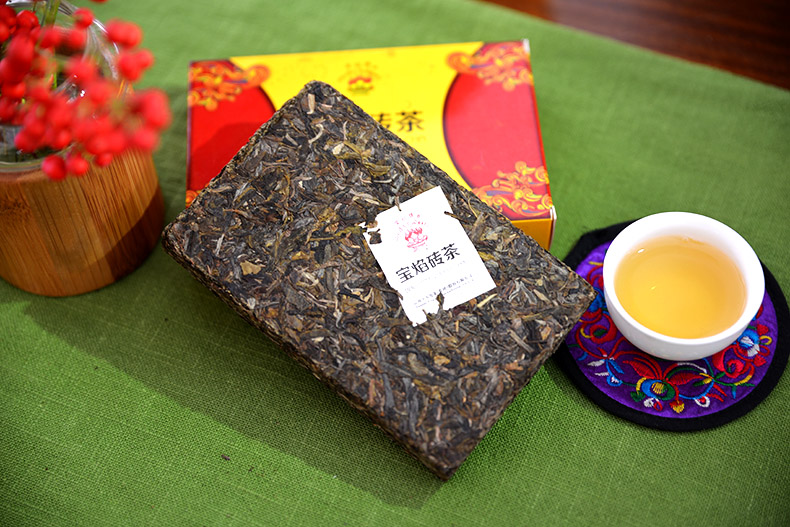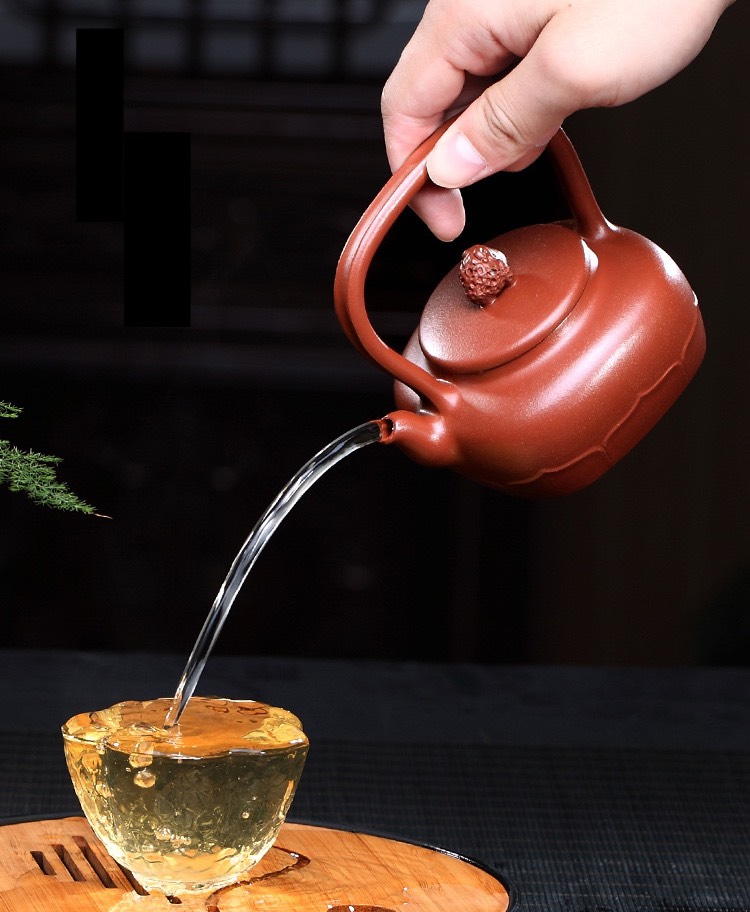As a tea lover you may have experience excessive dryness in the throat or mouth after drinking tea. It may feel like your throat is tightening, and sometimes even itchy, or painfull. In China we called this a ‘locked throat’ or 'suo hou' (锁喉). In the West, it’s often just described as a dry mouthfeel or dry throat.
Especially those drinking pu erh tea, may have had such an experience. Even though, dryness is a common experience, the cause of this still a mystery to most tea lovers. In this guide, we will take a look at the potential causes of this phenomena.
Also read: pu erh tea taste explained.
Improper blending
One important factor causing dryness in the throat is the raw materials which are part of a pu erh blend. The majority of the pu erh teas are the result of blending tea from different regions of Yunnan. Through this, the tea master attempts to create a balanced and complex end product. However, when the blending doesn’t ‘fit’ or when one of the raw materials used is particularly low in quality, it can case the end product to fail, with a dry taste as a result.
However, a dry taste may not always be a problem of low quality tea. Some raw materials, especially small leaves from small bushes, may have an intense bitterness. When a pu erh is solely made from such raw material, it can cause the end product to be very dry in taste. One needs to carefully tweak the brewing parameters to get a good steep out of such tea.
A skillful pu erh blender will know that such leaves should never be made solely into an end product. When they're blended intelligently with larger leaves, the end result can be good to excellent. Generally larger leaves will over time allow a tea cake to obtain a smoother texture, while the smaller leaves add complexity to the taste. Basically you combine the advantages of small and large leaves into a perfect end product.
Bad blending won’t appear often, especially not at large tea factories, such as Dayi tea. They've a lot of experience in standardizing blends, which are perfected through decennia. On the other hand, small factories, which have cost and time constraints, may do less research and blend in a reckless way. In such situation, improper blending can result in teas with a dry mouthfeel.
The battle between single-origin and blends
In the world of tea, there's a battle going on between single origin and blended pu erh. Smaller factories tend to compete on better raw material from a single origin, while larger factories are still convinced that standardized blends are the way to go. As a consequence, productions from small factories are more volatile in quality, while large factories offer a stable and predictable product.
Improper processing, using high temperature
To save time, some factories deliberately use high indoor temperatures to dry fresh pressed cakes; or roast tea with too much heat. The latter process is known as 'sha qing'.
To give you a basic idea of pu erh tea processing, raw leaves are picked and withered until it has lost a certain amount of water content. The withering is then stopped by roasting the leaves in a pan. This process is known as 'sha qing'. It's especially at the shaqing stage at which overly high temperatures are used, which can possibly burn the leaves and allow it to lose too much water content. Rushing the production process in such a way can cause the chemical composition of the leaves to get out of tune. This subsequently negatively affects the fermentation process, if the raw pu erh is pile fermented (wo dui) into ripe pu erh.
When too high temperatures are used during the roasting and steaming process, the end result may be a dry taste. This may not only be the case in raw pu erh, but even in post fermented pu erh. See below a video of how leaves are steamed before they're pressed:
Improper processing, drying finished tea under the sun
When maocha (processed loose leaf) is steamed and pressed into cakes. They are still a bit wet and need to be dried indoor on wooden shelves. For efficiency purposes some factories will quickly let the cakes dry in direct sunlight.
Whether the final product is a cake, tuocha or brick. In no circumstances should the cake be dried in sunlight. The reason is simple, the resulting cake will be still wet inside and dry on the outside. Such an unequal distribution of water content will result in mildew. The taste of the tea will also not develop in a good direction, possibly causing dryness in the mouth and throat.
Improper storage
Good pu erh tea requires good raw materials, good processing and good storage! Storage is the most important factor to secure optimal aging of pu erh.
Storage becomes problematic when high temperatures are combined with high humidity or bad ventilation. In such conditions, when the tea isn’t sealed and the packaging wrapper is in direct contact with the air. The locked throat phenomenon can happen easily.
Read this article if you want to learn more about how to store pu erh tea.
Not awakening tea
One other reason that can cause dryness is when the tea is not properly awakened. Especially very old pu erh, sometimes requires time and air to awaken. Luckily this can easily be fixed. Carefully pry the pu erh into small pieces and spread it out for 30 minutes to let it get in contact with the surrounding air.
Rinsing tea is also part of the awakening process. So besides waiting for dry tea to awaken, we also highly recommend to perform one or two quick rinses to let the leaves further unfurl.
When this doesn’t fix the problem, we recommend to break up the tea and store it into an Yixing jar. These clay jars are breathable and lets the tea slowly awaken. See below a demonstration video:
Improper Brewing, Too High Pouring Speed
One other factor contributing to dryness in pu erh could be due to improper preparation. To avoid dryness, try not to pour hot water from too much distance to the teapot. This will cause the water to flow too fast creating a fast current in the tea brewing vessel. Instead, get closer to teapot and control the pouring speed. This principle also applies when pouring tea from teapot to pitcher, and from pitcher into the cup. As weird as this may sound, consciously controlling the pouring speed, will soften the texture of the tea.
While lowering the pouring speed can help reduce dryness, it won’t be able to fix an overly dry tea.
Also, we do not intend to argue that high pouring speed isn’t good at all times. While it’s not good for aged pu erh, high pouring speed can be good for fresh and highly fragrant teas such as oolong or jasmine tea.
Drinking tea too hot
At last, dryness can also be caused by drinking tea quickly after it's poured. The tea is too hot the texture is more dry, and can damage the throat. On the other hand, cooled down tea will have a smoother texture. So it's good to pour tea and let it rest a bit. To allow tea to cool down faster, we recommend to get smaller Chinese tea cups. Especially ones with a flat profile allow the tea to cool down in just a matter of seconds.
If you're new to brewing pu erh, have a look at our pu erh tea brewing guide discussing all the ins and out of brewing a good cup of tea.
Personal Condition
Sometimes, it's not the tea, but personal conditions that cause you to have a dry mouthfeel after drinking pu erh. Especially if you've a sore throat, it's very sensitive to bitter flavors. Therefore, drinking raw pu erh can easily lock your throat. In such circumstances, switching to a smooth ripe pu erh will be a much better choice.
At last, if you're very thirsty and you already have a dry throat, drinking raw pu erh tea directly may only make it worse. It's recommended to moist your throat with warm plain water first.
Concluding Notes
In practice, the majority of the causes of dryness is related to improper processing and poor storage. Poor blending may lead in a bad taste, but not easily causes dryness. Improper awakening and brewing are causes that can easily be fixed, and we hope that the tips above will improve your tea experience; and help you in choosing the right pu erh teas to invest in yourself.
If the above info doesn't help you fix the taste of your pu erh tea. Also read this article for more tips on improving the taste of pu erh.
Dry mouth after drinking aged white tea
At last, dryness in the mouth can also be caused by aged white teas. Aged whites have a lot in common with pu erh tea, as the raw leaves are also sun-dried. In addition, the same processes of steaming and compression into cakes apply to white tea cakes. The same principles and causes described in this article will also to some extend apply to white tea.
We highly appreciate it if you could give us feedback on this article in the below comment section. Also, if you have any other questions, feel free to ask as well!

